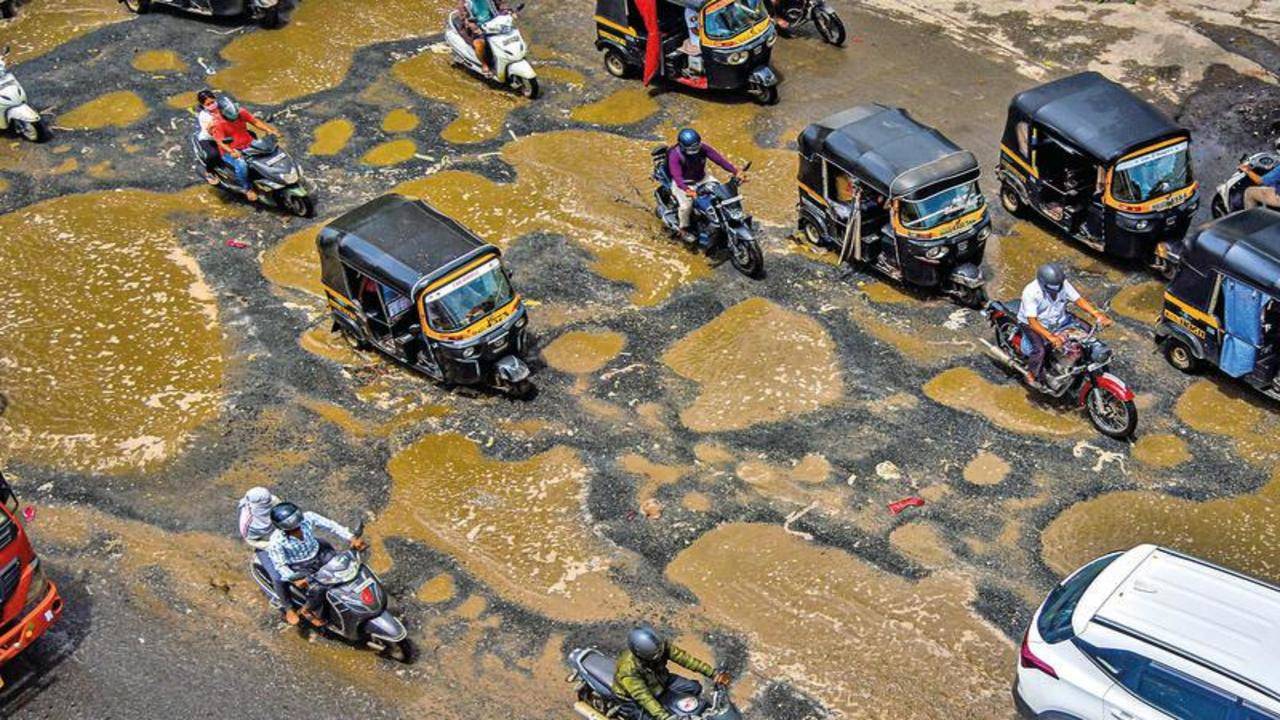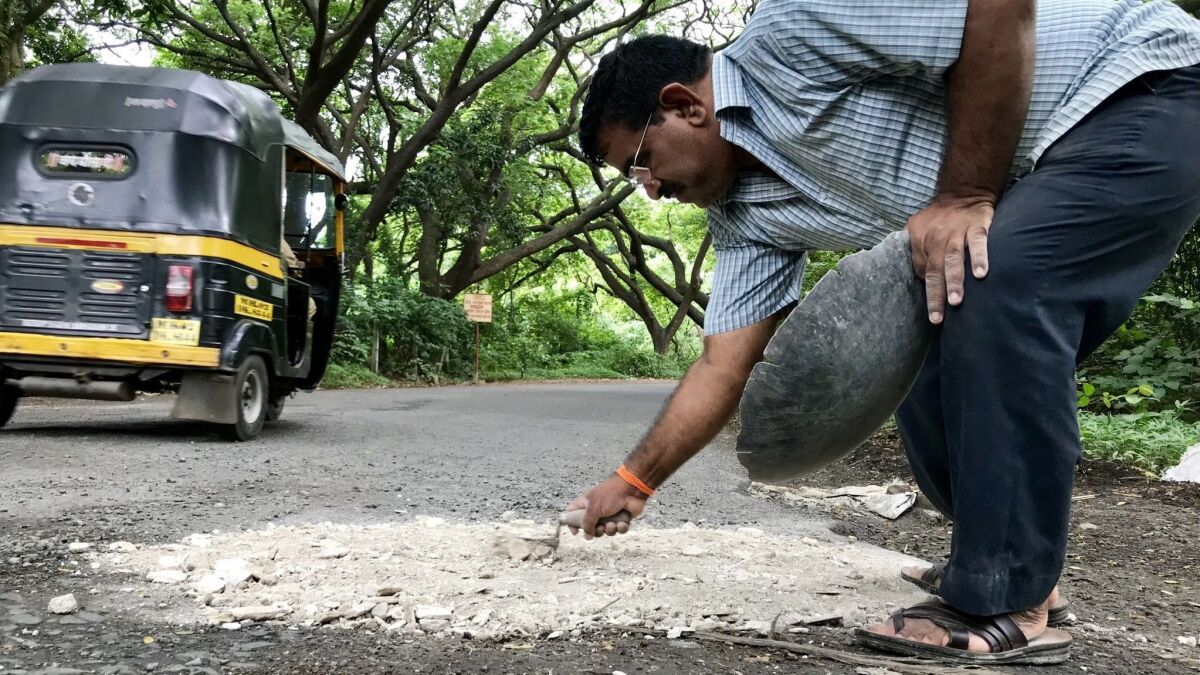Navigating the Perilous Indian Monsoon: A Guide to Safe Driving 2023

Navigating the Perilous Indian Monsoon: A Guide to Safe Driving 2023
Geological structures created by the erosive action of water include craters that occur during monsoon seasons.
Even though the government keeps building new motorways, the problem that leads to potholes and broken roads during the rainy season still needs to be addressed. A crater-forming incident also came to light. In a recent development, monsoon rainfall caused craters to appear on highways in several Indian towns. In Janakpuri, Delhi, a sizable portion of the road fell yesterday. Other cavities forming were seen in Mumbai, Ahmedabad, and Jaipur. Let’s examine the reasons why such a circumstance occurs.

Monsoon, the much-awaited season in India, relieves scorching heat and replenishes the land with much-needed water. However, the torrential downpours accompanying the monsoon season often wreak havoc on the country’s road infrastructure. Indian roads, already burdened by traffic congestion and inadequate maintenance, suffer the most during this period.
The erosive strength of water is responsible for the geological structure known as craters, which form during monsoon seasons. Monsoons, typified by intense rainfall, frequently occur in areas with a particular seasonal wind pattern. These heavy rains have the potential to alter the terrain significantly, creating craters. The procedure starts when precipitation contacts the ground. Surface runoff is created when the soil cannot absorb the water rapidly enough. As it travels downward, the runoff gains speed and progressively erodes the soil while removing loose debris. As the water picks up speed, it scrapes the surface, forming gullies and channels.

The channels may become rivulets or tiny streams as they become more profound. These waterways concentrate the water flow, increasing its erosive strength. Rocks and pebbles are moved and carried away by the water’s force and bigger particles. This ongoing erosion gradually deepens and widens the channels, creating mini-gorges.
Poor Drainage Systems:
One of the primary reasons for the vulnerability of Indian roads during the monsoon season is the inadequate drainage infrastructure. Many roads need proper stormwater drainage systems, leading to waterlogging and accumulation of rainwater on the road surface. This waterlogging reduces the load-bearing capacity of the road and makes it susceptible to damage, including potholes and cracks.
Potholes and Surface Deterioration:
Potholes are a ubiquitous feature of Indian roads during the monsoon season. Heavy rainfall, combined with the absence of proper maintenance, causes the formation and enlargement of potholes. Potholes pose a significant risk to motorists and can cause accidents and vehicle damage. The constant cycle of water seeping into these potholes and the subsequent traffic passing over them exacerbates the problem, resulting in surface deterioration.
Weak Road Construction:
Another reason for the vulnerability of Indian roads during the monsoon season is the poor quality of road construction. Many roads are built with substandard materials and inadequate design considerations, leading to faster wear and tear. The heavy rains and increased vehicular movement during the monsoon expose these deficiencies, resulting in road degradation and reduced durability.
Erosion and Landslides:
In hilly regions, monsoon rains often trigger soil erosion and landslides, leading to road closure or partial blockage. The fragile slopes alongside the roads are prone to corrosion, which can undermine the stability of the roadbed. Landslides can cause extensive damage to the road infrastructure, making transportation in these regions extremely challenging during the monsoon season.
Inefficient Maintenance:
The lack of timely maintenance exacerbates the problems faced by Indian roads during the monsoon season. Many routes need proper repairs or resurfacing before the monsoon, and existing issues are often left unaddressed. The cumulative effect of this neglect is the deterioration of the road network during the rains, resulting in increased travel times, congestion, and inconvenience for commuters.
Overloaded Vehicles:
Overloading vehicles, a common sight on Indian roads, contribute significantly to road damage during the monsoon season. Trucks and commercial vehicles carrying excessive loads put excessive stress on the road surface, leading to accelerated deterioration. Heavy rainfall and overloaded vehicles further weaken the roads, making them more susceptible to damage.
Lack of Road Safety Measures:
Indian roads face numerous safety challenges, and the monsoon season amplifies these concerns. Reduced visibility, slippery surfaces, and damaged road conditions increase the risk of rain-related accidents. Inadequate road safety measures, such as the absence or improper functioning of streetlights, poorly marked lanes, and insufficient signage, compound the problem and threaten commuters.
The erosive power of the water may be more robust in locations with softer or less solidified rocks. The rushing water progressively wears the weaker layers, leaving depressions or hollows in the landscape. These depressions, sometimes known as craters, can range in size and depth depending on the amount of rainfall, how long the monsoon season lasts, and the local geology.
In addition, elements, including the terrain’s slope, plant coverage, and natural and manufactured impediments, might affect how craters form during monsoons. While thick vegetation helps reduce runoff and erosion, steep slopes can increase water’s speed and erosive strength.
However, the creation of craters can be made worse by human activities, including deforestation, inappropriate land use, and poor drainage systems.

The erosive power of water causes craters to develop during monsoon seasons. As a result of the heavy rain, there is surface runoff, which scrapes the ground, deepens channels, and progressively erodes the terrain. The size and depth of these craters are significantly influenced by the length and severity of the monsoon and by geological and environmental variables. It is essential to comprehend these processes to regulate land use and prevent monsoon-induced erosion’s possible detrimental effects.

The monsoon season in India poses significant challenges to the country’s road infrastructure. Poor drainage systems, the prevalence of potholes, weak road construction, erosion and landslides, inefficient maintenance practices, overloaded vehicles, and a lack of road safety measures contributed to the vulnerability of Indian roads during this time. To mitigate these challenges, it is crucial to improve drainage infrastructure, enhance road construction standards, implement timely maintenance practices, and promote road safety measures. Only through concerted efforts and sustained attention to these issues can Indian roads better withstand the monsoon fury and provide safer and more efficient transportation for the country’s citizens.





